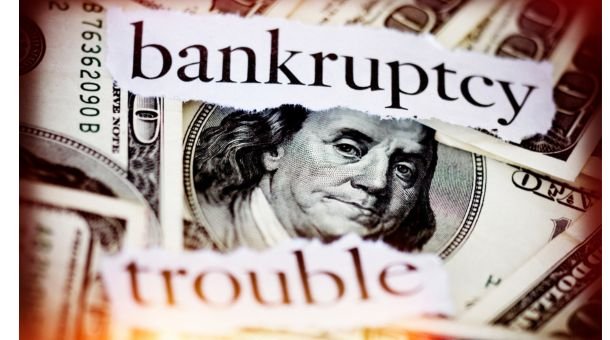As of March 2023, Lehman Brothers held the record for the largest corporate bankruptcy in United States history. When the New York-based investment bank filed for bankruptcy on September 15, 2008, its assets were valued at approximately 691 billion U.S. dollars
Within the realm of business, the tremors caused by corporate bankruptcy reach far and wide, affecting not only the company itself but also the larger economy and society. As the dominoes fall, jobs vanish, supply chains fracture, and economic confidence wavers. This article peels back the layers to expose the intricate ways in which corporate bankruptcy shapes our financial landscape and leaves an indelible mark on individuals, communities, and the overall well-being of society.
Join us as we unravel the far-reaching consequences of corporate bankruptcy, from the crippling loss of livelihoods to the strain on pension funds and retirement savings. Explore how this phenomenon disrupts local economies, tests the resilience of communities, and even questions the very fabric of corporate ethics and responsibility. By understanding these intricate dynamics, we can pave the way for economic stability and foster a society that weathers the storm with resilience.
Embark on this captivating journey, where the ripples of corporate bankruptcy reveal the profound impact on the economy and society at large. Through careful examination and analysis, we will uncover the challenges faced and potential solutions required to navigate these turbulent waters and emerge stronger, more prepared, and better equipped for a prosperous future.
What is the Difference Between Corporate Insolvency and Bankruptcy?
| Corporate Insolvency | Bankruptcy |
| Refers to a financial state where a company is unable to meet its financial obligations and liabilities. | Refers to a legal process initiated by a financially distressed company seeking protection from its creditors. |
| It is a broader term that encompasses both cash flow insolvency (inability to pay debts as they become due) and balance sheet insolvency (assets value lower than liabilities). | It specifically denotes the formal declaration of insolvency through a court proceeding. |
| Insolvency can lead to various outcomes, including debt restructuring, negotiation with creditors, or business turnaround attempts. | Bankruptcy typically involves the liquidation of assets to repay creditors or a reorganization plan to restructure the company’s operations and debts. |
| Companies can be insolvent but not yet bankrupt, as efforts may be made to resolve the financial distress and avoid bankruptcy. | Bankruptcy is the final stage when all efforts to resolve the financial difficulties have been exhausted, and the court intervenes to oversee the proceedings. |
| Insolvency can occur in various stages of financial distress, and companies may seek alternative solutions outside of bankruptcy to resolve their financial issues. | Bankruptcy is a formal and legal process that provides a structured framework to address the financial crisis and distribute assets among creditors. |
Causes of Corporate Bankruptcy:

- Excessive debt burden and financial mismanagement
- Poor cash flow management and liquidity issues
- The decline in sales and revenue
- Inability to adapt to changing market conditions or technological advancements
- Competitive pressures and loss of market share
- Legal or regulatory challenges
- Economic downturn or recession
- Ineffective business strategies or expansion into unprofitable ventures
- Fraud or financial misconduct
- Natural disasters or unexpected events impacting operations
- Failure to meet debt obligations or renegotiate debt agreements.
Economic and Social Impact of Corporate Bankruptcy
| Economic Impact of Corporate Bankruptcy | Social Impact of Corporate Bankruptcy |
| Job losses and increased unemployment rates | Financial hardships for affected employees and their families |
| Disruptions in the supply chain, affecting other businesses and industries | Decline in the quality of life in local communities |
| Reduced investor and consumer confidence in the economy | Increased poverty rates |
| Tightened lending criteria, making it harder for businesses to access capital and credit | The burden on taxpayers for potential bailouts |
| Declining stock prices and decreased consumer spending | Erosion of public trust in the corporate sector |
| Potential decrease in economic growth and development | Damage to the reputation of the company and its executives |
| Losses in pension funds and retirement savings | The decline in the quality of life in local communities |
| Limited resources available for other economic initiatives | Impact on community development and local economies |
What is an example of Corporate Bankruptcy?
Enron, WorldCom, and Lehman Brothers are widely recognized examples of companies that faced bankruptcy and were unable to recover. However, it is worth noting that there are also instances where companies have successfully emerged from bankruptcy in a stronger position than before their financial collapse.
Preventing Corporate Bankruptcy:

Strategies for Preventing Corporate Bankruptcy:
Effective Financial Management
Implementing sound financial practices, such as regular budgeting, cash flow management, and monitoring key financial ratios, can help prevent financial distress.
Diversification and Adaptability
Businesses should diversify their product offerings and markets, as well as stay agile and responsive to changing customer demands and market trends.
Risk Management
Proactive risk assessment and mitigation strategies, including hedging against market fluctuations and securing appropriate insurance coverage, can minimize potential financial risks.
Strong Corporate Governance
Establishing robust corporate governance practices, including independent oversight, transparent reporting, and ethical business conduct, can enhance the financial stability and reputation of the company.
Long-Term Planning and Contingency Measures
Developing comprehensive business plans, setting achievable goals, and creating contingency plans can provide a roadmap for sustainable growth and help navigate potential crises.
Early Warning Signs of Corporate Bankruptcy:

- Continuous Losses or Declining Profit Margins
- Increasing Debt Levels and Liquidity Issues
- Inability to Meet Financial Obligations or Delayed Payments
- Significant Reduction in Sales or Market Share
- Persistent Negative Cash Flow
- Internal Management or Operational Problems
- Regulatory or Legal Issues
- Downgrades in Credit Ratings
- Loss of Key Customers or Suppliers
- Drastic Management or Ownership Changes
The Role of Government in Preventing Corporate Bankruptcy:
- Governments can establish and enforce regulations to promote transparency, fair competition, and responsible financial practices, reducing the likelihood of corporate failures.
- Governments may provide financial support, loans, or grants to struggling companies to help them stabilize their operations and avoid bankruptcy.
- Governments can enact effective insolvency laws that provide mechanisms for debt restructuring, bankruptcy protection, and rehabilitation of financially distressed companies.
- During times of economic downturn or crises, governments can implement stimulus packages, tax incentives, or industry-specific support to mitigate the risk of widespread corporate bankruptcies.
- Governments can establish monitoring systems and collaborate with regulatory bodies to identify early warning signs of corporate distress, enabling timely interventions to prevent bankruptcy.
- Governments can provide resources, training programs, and support to educate businesses on effective financial management practices, risk assessment, and contingency planning.
By employing a combination of preventive strategies, recognizing early warning signs, and implementing supportive government measures, the likelihood of corporate bankruptcy can be reduced, fostering a more stable and resilient business environment.
Conclusion
corporate insolvency and bankruptcy are related yet distinct concepts in the realm of financial distress. Corporate insolvency signifies a company’s inability to meet its financial obligations, while bankruptcy refers to the formal legal process undertaken by a financially distressed company seeking protection or resolution.
While insolvency can occur at various stages and allows for alternative solutions, bankruptcy represents the final stage where the court intervenes to oversee the proceedings and distribute assets among creditors. Understanding the nuances between these terms is important for navigating financial difficulties and pursuing appropriate courses of action to address the challenges faced by distressed companies.
| what is bankruptcy |
| effects of bankruptcy order on debtor |
| why do markets work best when there are many buyers and sellers? |

